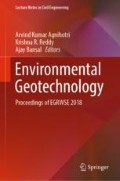Abstract
High demand for some rare gems creates pressure on the production line and some gems are consumed quickly in some countries. In order to sustain the gem supply to the most demanding markets, man-made minerals may be considered as an alternative to expensive genuine ones. Non-genuine precious and semiprecious stones can be found as enhanced, reproduced, and counterfeited gems. The former is extremely common among precious gems, while the last one is usually for semiprecious stones. Enhancement methods transform (or recycle) very low-quality (waste) gems into unique jewelry. Fabricated crystals are obtained (or recycled) from different or even irrelevant materials. The identification of such materials is getting harder due to continuous improvement in production technologies. Governing bodies have begun to issue regulations to their members so that misleading information given in retail can be reduced. In addition to limited regulation and enforcement, the buyers will also need some sort of education provided by trustworthy foundations such as reputable labs, mineral museums, and academic institutions. Although the internet provides a vast amount of information about fake minerals, most of which is also fictitious, especially, earth science-related museums should have a special duty in this regard and educate the public through hands-on experiments.
Access this chapter
Tax calculation will be finalised at checkout
Purchases are for personal use only
References
AGTA (2012) Gemstone information manual (G.I.M.), 15th edn. American Gem Trade Association
Ali EM, Edwards HG (2014) Analytical Raman spectroscopy in a forensic art context: the non-destructive discrimination of genuine and fake lapis lazuli. Spectrochim Acta Part A Mol Biomol Spectrosc 121:415–419
Bauer M (2012) Precious stones, vol 1. Courier Corporation
Bernardino NDE, Izumi CM, de Faria DL, de Faria DL (2016) Fake turquoises: an example of Raman microscopy applied to gemology. Forensic Sci Int 262:196–200
Bower B (2015) Neanderthals created oldest jewelry in Europe. Science news for students. https://www.sciencenewsforstudents.org/article/neandertals-create-oldest-jewelry-europe. Accessed 15 Jan 2018
Byrappa K, Ohachi T (2003) Crystal growth technology. Springer, New York
Calik A, Yasar C, Ulugergerli EU, Altinoluk I (2014) The virtual education opportunities to support conventional teaching: e- museum for earth science, EGU2014. Austria, Vienna
Calik A, Erenoglu RC, Erenoglu O, Ulugergerli EU, Arslan N (2017) Imaging of spectral properties of opal mineral using sensor data, Yenice district, north-western Turkey. In: International symposium on GIS applications in geography & geosciences. Çanakkale
CIBJO (2012) the gemstone book, gemstones, organic substances & artificial products—terminology & classification. cIBJO/Coloured Stone Commission
Dotto CT, Isotani S (1991) Irradiation and heating effects in amethyst crystals from Brazil. Radiat Eff Defects Solids 117(4):355–361
Dubin LS (1987) The history of beads from 30,000 BC to the present. Harry N. Abrams Inc
Koivula JI, Tannous M, Schmetzer K (2000) Synthetic gem materials and simulants in the 1990s. Gems Gemol 36:360–379
Krishna R, Chanda MW, Ahmed AH (2014) Zambia’s zeal for gemstones: a review of historical development. In: International conference on management science and management innovation
Mandaci E (2016) Asur Ticaret Kolonileri Cagi ve Hititler Devrinde Anadolu’da Kuyumculuk. Insan ve Toplum Bilimleri Arastirmalari Dergisi 5(8):3193–3213
McClure SF, Smith CP (2000) Gemstone enhancement and detection in the 1990s. Gems Gemol 36(4):336–379
McClure SF, King JM, Koivula JI, Moses TM (2000) A new lasering technique for diamond. Gems Gemol 36(2):138–146
Mersmann A (ed) (2001) Crystallization technology handbook. CRC Press
Renfro N, Koivula JI, Wang W, Roskin G (2010) Synthetic gem materials in the 2000s: a decade in review. Gems Gemol 46(4):260–273
Scheel HJ, Fukuda T (2005) Crystal growth technology. Wiley
Schumann W (2009) Gemstones of the world. Sterling Publishing Company Inc
Shigley JE, McClure SF, Koivula JI, Moses TM (2000) New filling material for diamonds from oved diamond company: a preliminary study. Gems Gemol 36(2):147–153
Tang SM, Tang SH, Mok KF, Retty AT, Tay TS (1989) A study of natural and synthetic rubies by PIXE. Appl Spectrosc 43(2):219–223
Webster R (1975) Gems: their sources, descriptions and identification, 4th edn. Buttersworths, London, p 437
Wodiska J (1909) A book of precious stones: the identification of gems and gem minerals, and an account of their scientific, commercial, artistic, and historical aspects. GP Putnam’s sons, New York and London press, p 365
Author information
Authors and Affiliations
Corresponding author
Editor information
Editors and Affiliations
Rights and permissions
Copyright information
© 2019 Springer Nature Singapore Pte Ltd.
About this paper
Cite this paper
Calik, A., Karaca, O., Yasar, C., Ulugergerli, E.U. (2019). Fake and Synthetic Minerals; A Way to Sustain the Gem Supply. In: Agnihotri, A., Reddy, K., Bansal, A. (eds) Environmental Geotechnology. Lecture Notes in Civil Engineering , vol 31. Springer, Singapore. https://doi.org/10.1007/978-981-13-7010-6_30
Download citation
DOI: https://doi.org/10.1007/978-981-13-7010-6_30
Published:
Publisher Name: Springer, Singapore
Print ISBN: 978-981-13-7009-0
Online ISBN: 978-981-13-7010-6
eBook Packages: EngineeringEngineering (R0)

